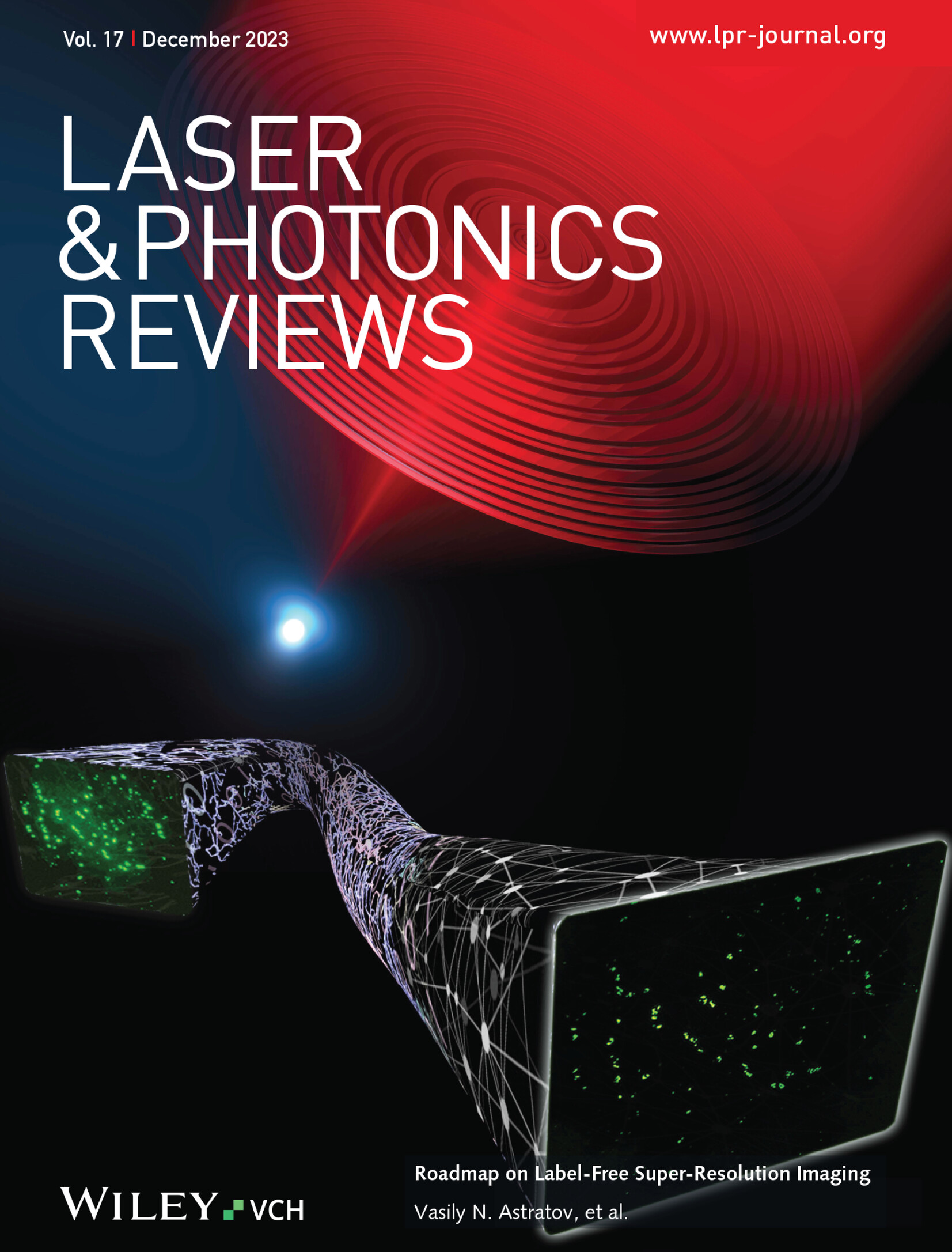Realizing Near‐Unity Photoluminescence Quantum Yield in Metal Halide RbCdCl3:Mn2+ Crystals via Phase Transformation Engineering
IF 9.8
1区 物理与天体物理
Q1 OPTICS
引用次数: 0
Abstract
All‐inorganic metal halides have merged as auspicious materials for optoelectronic applications due to their predominant tunable and controlled photoluminescence (PL) properties. Despite substantial efforts and advances in the development of these all‐inorganic metal halides, considerable long‐term challenges remain to be solved to realize cutting‐edge material performances. Here, an all‐inorganic metal halide RbCdCl通过相变工程实现金属卤化物 RbCdCl3:Mn2+ 晶体的近极光量子产率
全无机金属卤化物因其主要的可调可控光致发光(PL)特性,已成为光电应用的理想材料。尽管在开发这些全无机金属卤化物方面做出了巨大努力并取得了重大进展,但要实现材料的尖端性能,仍有大量长期挑战有待解决。本文报告了一种无机金属卤化物 RbCdCl3,它具有从非包晶(正交相)到包晶(四方相)的可逆结构相变。有趣的是,通过相变调控工程,RbCdCl3:Mn2+ 热致变色荧光材料实现了近乎统一的光致发光量子产率(PLQY)、大斯托克斯位移(275 nm)和长衰减寿命(14.69 ms),而原始非包晶石结构的初始光致发光量子产率仅为 3.1%。此外,通过原位光学表征和第一性原理计算,系统地阐明了潜在的 PL 开关机制。这项工作展示了一种基于可调可逆光致发光开关的热致变色荧光防伪材料,同时也提供了一种金属卤化物的相结构工程,以拓宽其在光电领域的多方面应用。
本文章由计算机程序翻译,如有差异,请以英文原文为准。
求助全文
约1分钟内获得全文
求助全文
来源期刊
CiteScore
14.20
自引率
5.50%
发文量
314
审稿时长
2 months
期刊介绍:
Laser & Photonics Reviews is a reputable journal that publishes high-quality Reviews, original Research Articles, and Perspectives in the field of photonics and optics. It covers both theoretical and experimental aspects, including recent groundbreaking research, specific advancements, and innovative applications.
As evidence of its impact and recognition, Laser & Photonics Reviews boasts a remarkable 2022 Impact Factor of 11.0, according to the Journal Citation Reports from Clarivate Analytics (2023). Moreover, it holds impressive rankings in the InCites Journal Citation Reports: in 2021, it was ranked 6th out of 101 in the field of Optics, 15th out of 161 in Applied Physics, and 12th out of 69 in Condensed Matter Physics.
The journal uses the ISSN numbers 1863-8880 for print and 1863-8899 for online publications.
文献相关原料
| 公司名称 | 产品信息 | 采购帮参考价格 |
|---|

 求助内容:
求助内容: 应助结果提醒方式:
应助结果提醒方式:


